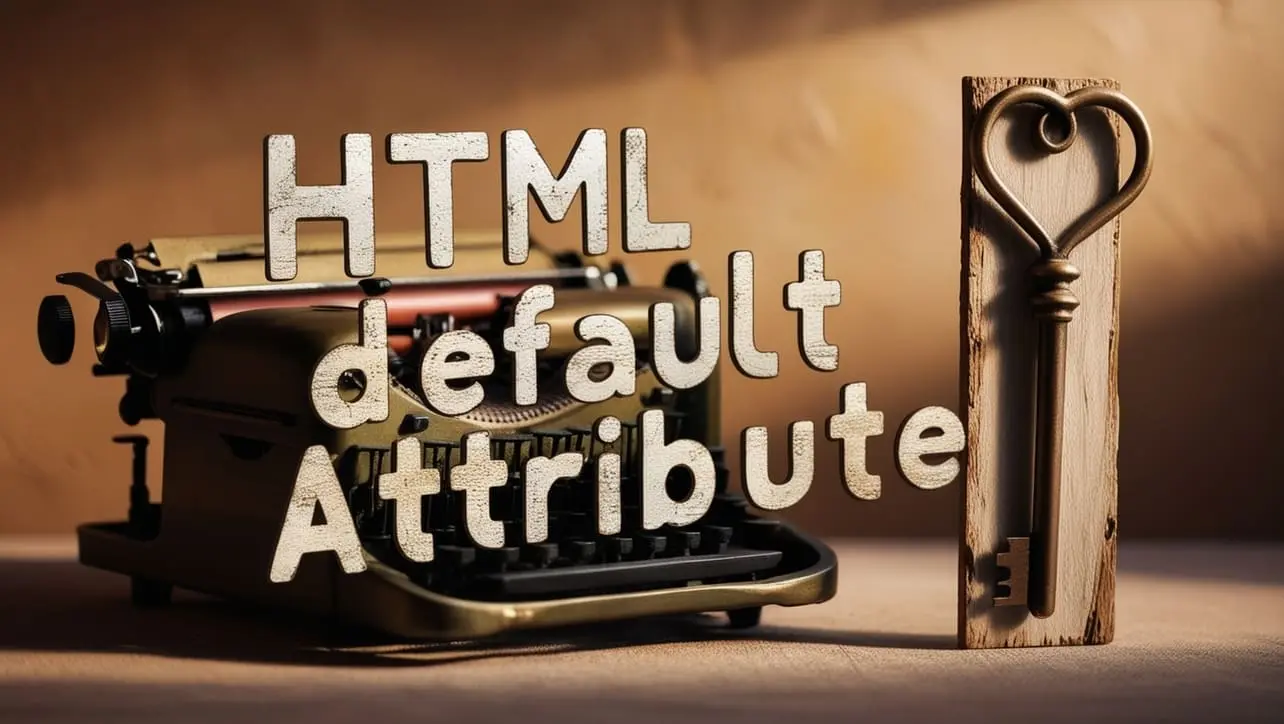
HTML Basic
HTML Reference
- HTML Tags
- HTML Deprecated Tags
- HTML Events
- HTML Attributes
- accept
- accept-charset
- accesskey
- action
- align
- alt
- as
- async
- autocomplete
- autofocus
- autoplay
- bgcolor
- border
- charset
- checked
- cite
- class
- color
- cols
- colspan
- content
- contenteditable
- controls
- coords
- data
- data-*
- datetime
- default
- defer
- dir
- dirname
- disabled
- download
- draggable
- enctype
- enterkeyhint
- for
- form
- formaction
- headers
- height
- hidden
- high
- href
- hreflang
- http-equiv
- id
- inert
- inputmode
- ismap
- kind
- label
- lang
- list
- loop
- low
- max
- maxlength
- media
- method
- min
- multiple
- muted
- name
- novalidate
- onabort
- onafterprint
- onbeforeprint
- onbeforeunload
- onblur
- oncanplay
- oncanplaythrough
- onchange
- onclick
- oncontextmenu
- oncopy
- oncuechange
- oncut
- ondblclick
- ondrag
- ondragend
- ondragenter
- ondragleave
- ondragover
- ondragstart
- ondrop
- ondurationchange
- onemptied
- onended
- onerror
- onfocus
- onhashchange
- oninput
- oninvalid
- onkeydown
- onkeypress
- onkeyup
- onload
- onloadeddata
- onloadedmetadata
- onloadstart
- onmousedown
- onmousemove
- onmouseout
- onmouseover
- onmouseup
- onmousewheel
- onoffline
- ononline
- onpagehide
- onpageshow
- onpaste
- onpause
- onplay
- onplaying
- onpopstate
- onprogress
- onratechange
- onreset
- onresize
- onscroll
- onsearch
- onseeked
- onseeking
- onselect
- onstalled
- onstorage
- onsubmit
- onsuspend
- ontimeupdate
- ontoggle
- onunload
- onvolumechange
- onwaiting
- onwheel
- open
- optimum
- pattern
- placeholder
- popover
- popovertarget
- popovertargetaction
- poster
- preload
- readonly
- rel
- required
- reversed
- rows
- rowspan
- sandbox
- scope
- selected
- shape
- size
- sizes
- span
- spellcheck
- src
- srcdoc
- srclang
- srcset
- start
- step
- style
- tabindex
- target
- title
- translate
- type
- usemap
- value
- width
- wrap
- HTML Global Attributes
- HTML Status Code
- HTML Language Code
- HTML Country Code
- HTML Charset
- MIME Types
HTML default Attribute

Photo Credit to CodeToFun
🙋 Introduction
The default attribute in HTML is used to set a default value for form elements.
It allows developers to pre-fill form fields with a specified value, providing users with initial information or suggestions.
This attribute is particularly useful in scenarios where you want to streamline data entry and guide users by offering default content.
🎯 Purpose of default
The primary purpose of the default attribute is to define a default value for a form element.
When a user interacts with the form, the default value is displayed in the input field initially. Users can either accept the default value or modify it based on their requirements.
💎 Values
The default attribute can be applied to various form elements, and its values depend on the type of element. For example:
- For text input fields, the value can be a string that represents the default text.
- For checkboxes and radio buttons, the value can be a boolean (true or false) to indicate whether the option is selected by default.
- For select elements, the value can be the default option that should be pre-selected.
📄 Example
Let's explore an example of using the default attribute in an HTML form:
<form>
<label for="username">Username:</label>
<input type="text" id="username" name="username" default="JohnDoe">
<label for="subscribe">Subscribe to newsletter:</label>
<input type="checkbox" id="subscribe" name="subscribe" default="true">
<label for="country">Select your country:</label>
<select id="country" name="country" default="US">
<option value="US">United States</option>
<option value="CA">Canada</option>
<!-- Additional options... -->
</select>
<input type="submit" value="Submit">
</form>🧠 How it Works
In this example, the default attribute is used to set initial values for the username input field, the subscription checkbox, and the country selection dropdown.
🔄 Dynamic Values with JavaScript
Similar to other form attributes, you can also set the default attribute dynamically using JavaScript.
This can be helpful when you want to adjust default values based on user interactions or specific conditions. Here's a brief example:
<script>
// Dynamically set default value for an input field
document.getElementById("dynamicField").default = "DynamicValue";
</script>🧠 How it Works
In this script, the default attribute is set to DynamicValue for an input field with the id dynamicField. This allows you to dynamically update the default value based on your application's logic.
🏆 Best Practices
- Use the
defaultattribute thoughtfully to provide users with helpful suggestions without hindering their ability to customize the input. - Ensure that default values are relevant and meaningful to the user, improving the overall user experience.
- Test your forms thoroughly, especially when using dynamic values, to ensure compatibility across different browsers.
🎉 Conclusion
The default attribute is a valuable tool for enhancing user interaction in HTML forms.
By setting default values, you can guide users and simplify the data entry process, ultimately improving the usability of your web forms.
👨💻 Join our Community:
Author

For over eight years, I worked as a full-stack web developer. Now, I have chosen my profession as a full-time blogger at codetofun.com.
Buy me a coffee to make codetofun.com free for everyone.
Buy me a Coffee












If you have any doubts regarding this article (HTML default Attribute), please comment here. I will help you immediately.